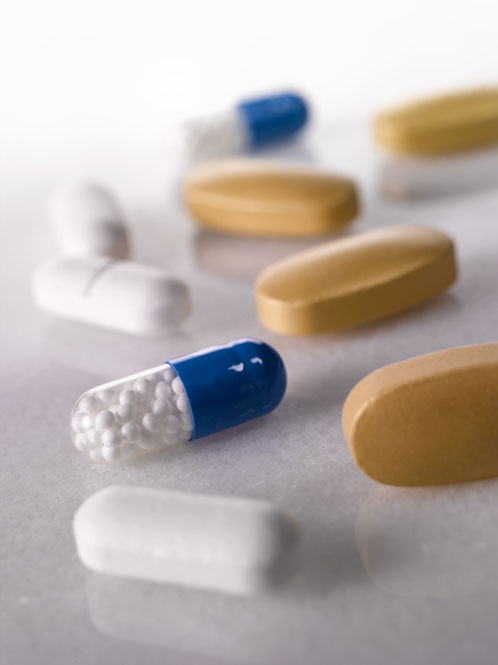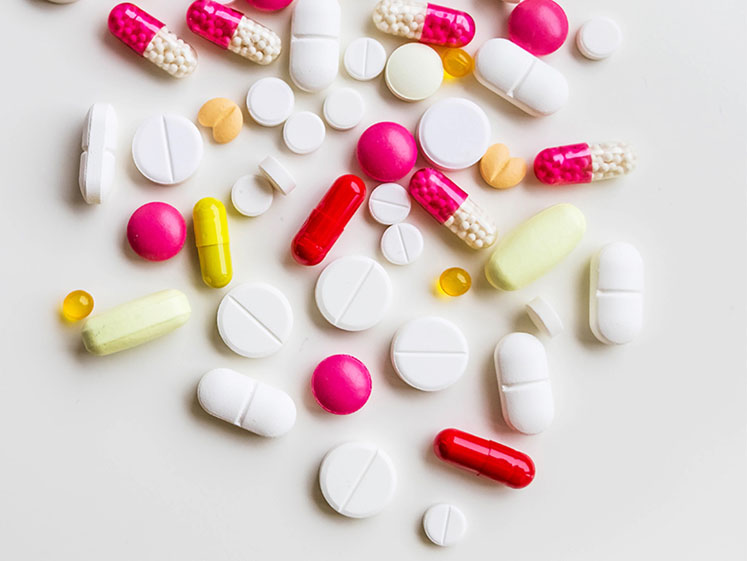Metal contaminants can originate from a number of sources, with the most obvious being from any of the raw materials, reagents or solvents used to make an API. For example, the metals may have been deliberately included in the API’s manufacturing process, such as the metal-based catalysts (palladium or platinum) used in hydrogenation reactions or a chiral catalyst that might contain ruthenium or rhodium.
The International Council for Harmonisation (ICH) has guidelines that set out strict rules regarding how much metal an API or drug can contain, which varies depending upon the metal itself and the method of drug delivery to the patient.
Classification of metal impurities
The ICH guideline Q3D on elemental impurities provides a risk-based approach.1 It classifies potentially hazardous metals into four groups, depending on what the biological effect might be in humans; testing for metals — dependent on the class — must therefore be done for an API as part of a risk assessment package alongside the synthetic process.
At the most extreme end of the scale, Class 1 includes arsenic, cadmium, mercury and lead, which are almost never actively involved in the manufacture of a pharmaceutical products. However, the high dangers they pose mean that they must still be included in the risk assessment and, if necessary, be tested for.
Class 2 contains metals classified as human toxicants and is split into two subcategories — Class 2A and 2B — depending on how likely elements within them are to be present in a drug product. Those in Class 2A (cobalt, nickel and vanadium) are deemed to have a relatively high probability of occurring in a drug product and, therefore, risk assessment is required across all potential sources of impurities and routes of administration.
Class 2B elements are considered to have a lesser probability of being present in a drug product and do not need to be included in the risk assessment … unless they are deliberately used in the manufacture of the API, excipients or any other components of the drug product. This list includes several metals commonly used as catalysts, as well as silver, gold, osmium, selenium and thallium.

A small number of metals — antimony, barium, chromium, copper, lithium, molybdenum and tin — fall into Class 3. These are described as having relatively low toxicities if taken orally. Generally, this will be above 500 µg/day and, as with Class 2B, only need to be considered in the risk assessment if they have been intentionally used in the process.
However, for a parenteral or inhaled product, the potential for their presence should always be evaluated, unless the route-specific permitted daily exposure (PDE) is more than 500 µg/day.
There are numerous other metals that do not have PDE levels because they have inherently low toxicities and, therefore, are not included in the ICH Q3D guideline. Some may be covered by other guidelines if there are specific risks for particular patient groups, such as zinc in patients with compromised liver function.
Risk assessment
The risk assessment in the ICH Q3D guidelines is at the heart of determining which tests will be required for trace metals. For raw materials coming into the manufacturing facility, the supplier will have specifications for impurities that they have to meet, and their ability to do this will be part of the qualification process for a new supplier.
For APIs, it is clearly important to know the synthetic route and all of the raw materials and reagents that are used in the process. If metal catalysts are used, it is also vital that effective purification processes are in place that are capable of removing the residual metal to below the required limits.
Another factor that will need to be considered is the nature of the vessels and other equipment being used. With stainless steel, for example, there is a risk that corrosion could introduce traces of iron into the batch, depending on the nature of the reagents being used.
If the process is being run in a Hastelloy reactor, even though the material is unreactive, there is still the potential for metal traces to enter the process (Hastelloy is a nickel alloy that can contain various other metals, depending on the grade of the material, such as chromium, iron, tungsten and molybdenum).
Testing methods
Historically, checking for the presence of metals and quantifying their amounts was done using a limits test based on wet chemistry. Although this still remains in some testing monographs, most current quantification techniques rely on modern instrumentation — as required by the regulatory authorities.
These include inductively coupled plasma mass spectrometry (ICP-MS), optical emission spectrometry (ICP-OES) and atomic absorption spectroscopy (AAS). ICP-OES and AAS both rely on burning the material and a signal is detected based on the wavelength of the lamp within the instrument. ICP-MS is far more sensitive and can often measure elements down to the parts per billion level.
In the development phase for a pharmaceutical product, although there will be an outline idea of which metals will need to be tested for, a semiquantitative scan can also be done on the ICP-MS instrument; this will check for the presence of every element in the periodic table. Although not as accurate as a quantification scan, this will give a good idea about which elements require further attention and will require quantifying to meet regulatory requirements.
The introduction of ever-more sensitive techniques and instruments has had the effect of allowing much smaller traces of metals to be identified.
Whereas the limits test that predominated a decade ago was sensitive to about 20 ppm, newer methods such as ICP-MS allow accurate quantification at much lower levels.
This poses an industry wide challenge as products move through the lifecycle; it’s critical to ensure that they still meet the more stringent requirements being laid down by the regulators.
Methods need to be fit for purpose, sufficiently robust and able to identify impurities at levels much lower than the maximum permitted. The regulators are aware of new and emerging technologies, but will be realistic enough to allow new techniques to become commonplace and reliable before changing requirements in the light of their enhanced capabilities.
For contract manufacturers, the testing protocols will be driven, to a certain extent, by the customer, the proposed route of administration and the likely dosage. The PDE will be dependent on the amount of API a dose contains and how many times a day the patient is treated.
A tablet containing 500 mg of API, which may be taken two at a time, four times a day, gives a 4 g daily dose, which is very different from a 5 mg once-daily dose. In mass terms, the patient will be ingesting 800 times less API, which means that the levels of trace metal in a low-dose API can be somewhat higher while still ensuring the patient’s exposure remains below the limit.

Reducing the risks
In terms of synthetic reagents, if metals are not used in the first place, then the risks of API contamination will be lower. Chemists will often try to avoid using metal catalysts, if possible, because of both expense and reproducibility; however, it’s often the case that metal-catalysed steps are the best option.
When it’s not possible to redesign a route to avoid such a step, chemists should be mindful that the closer to the final product the catalytic step is, the fewer opportunities there are for removing it via purification. Some metals, such as cadmium and platinum, have low permitted levels (daily limits in the nanograms). If they have to be used in the process, this may limit the daily dosage of the API that a patient can be given.
All raw materials must be carefully sourced and monitored, and it’s important to know how they are made to assess the likelihood of residual metals being present. Ultimately, there needs to be a good working relationship between process chemists, analytical scientists, the purchasing department and, of course, the end customer to minimise any risks.
In addition to the Certificate of Analysis provided by the supplier, externally sourced raw materials will largely be batch tested to check for metals. The onboarding process for the raw material supplier will include disclosure of the synthetic route used to make it, which will help to understand what might be present.
When manufacturing APIs in multipurpose facilities, the thorough cleaning of vessels is crucial; any residual metal traces left on the surface can contaminate the subsequent process, potentially introducing another metal that would not otherwise be covered by the next product’s risk assessment.
Some metals, notably tin, are notoriously difficult to clean, so any process must be undertaken with particular care and the method validated.
It may even be appropriate to do ICP-MS analysis as part of the cleaning validation to make sure the catalyst is removed from the vessel effectively.
Customers of contract manufacturers routinely ask for metals testing within the supply contract as it makes up part of the submission documentation for regulatory authorities. Providing metals testing results is now the norm, so proficiency with modern techniques and a thorough understanding of the requirements and regulatory guidelines are integral to the duty of care to customers. Ensuring that methodologies and results are accurate and robust are important, as they will form an essential part of the registration package for a new drug application.
The importance of safety
Developing efficient API processes is complex, but quality is always the most important factor. The limits of metal contamination are strict to protect the safety of patients; as such, designing routes wherein metals are used deliberately comes with risks.
The skill of the process chemist is to ensure that these risks can be mitigated with effective purification and by working alongside analytical chemists to ensure that the identification of residual metals — whether intentionally introduced or not — does not impact the final product’s quality or jeopardises the safety of the patient.
Reference
- www.ema.europa.eu/en/documents/scientific-guideline/international-conference-harmonisation-technical-requirements-registration-pharmaceuticals-human-use_en-32.pdf.
